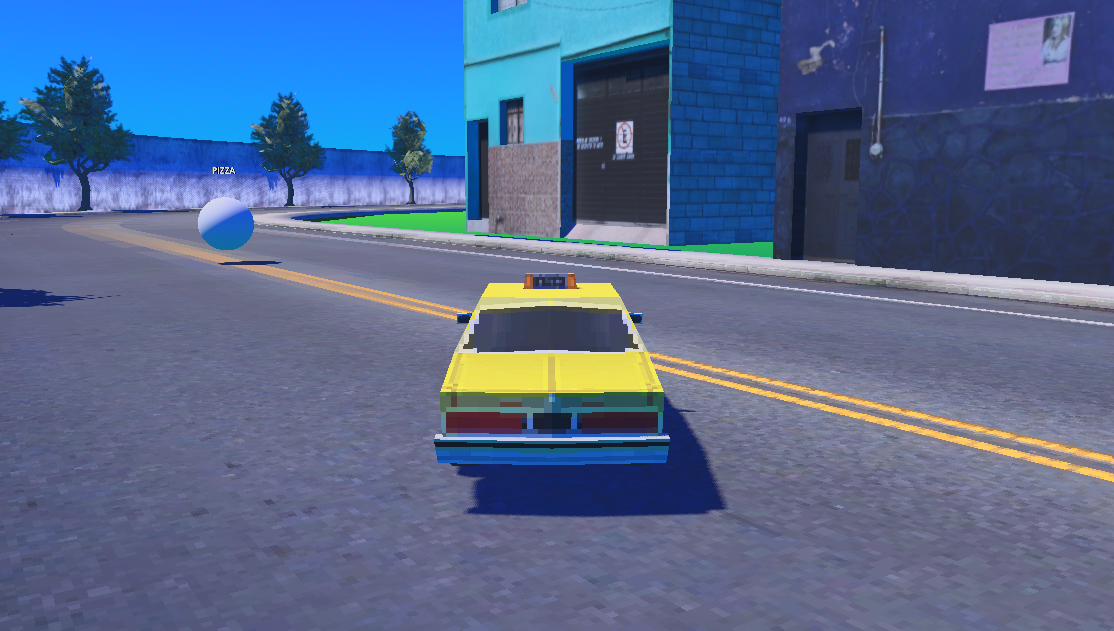Building the City
Why I Design My Game Worlds in Blender (Not Godot)
I’m a 40-year-old teacher who spends my spare time building games and teaching digital design. Over the years, I’ve tried plenty of tools for making 3D environments. And while I have a lot of respect for Godot as a game engine—lightweight, open-source, and great for beginners—when it comes to actual world design, I always end up back in Blender.
Here’s why.
The Godot Workflow: Modular, Manageable… Up to a Point
When I first started building levels in Godot, I went the modular route. The basic idea was:
-
Model walls, floors, crates, pipes, etc. in Blender
-
Export each piece as a
.glbor.obj -
Import them into Godot as individual meshes or scenes
-
Assemble the world by snapping the pieces together in the editor, like LEGO
At first, it felt like the “right” way to do things. It was organized, clean, and aligned with how most engines expect you to build levels.
But after a while, I started noticing a problem: it looked modular.
The levels ended up feeling like they were made from a prefab kit. Streets ran at perfect right angles. Terrain looked like flat panels stacked weirdly. Everything felt placed—not designed. Trying to create natural slopes, curved paths, or any sort of terrain with flow was a pain. And every time I needed to tweak a mesh or adjust a pivot point, it meant jumping back into Blender, exporting again, re-importing into Godot, and reassembling things. It just got old.
Blender: Where the World Actually Gets Built
So I flipped the process.
Now, instead of building the level inside Godot, I build the whole thing in Blender first. Here’s how that goes:
-
I design the full level layout in Blender—streets, buildings, terrain, hills, curved paths, everything
-
I use Collections to group areas: “Downtown”, “Market”, “Slum Hills”, etc.
-
I model collision meshes right alongside the visuals
-
I export the whole thing as a
.glb—organized, clean, and ready to go -
Then I bring that into Godot and layer scripts, lights, and gameplay logic on top
This way, I’m not snapping together modular walls. I’m shaping a world. I can build natural elevation, sloped alleys, winding roads, or layered verticality without needing a terrain plugin or any weird workarounds.
And the result? It looks better. Feels better.

Collision Doesn’t Have to Be a Headache
One of the most annoying parts of modular workflows is dealing with collisions. Every piece needs its own collision node, correctly aligned, and behaving the way it should. That’s a lot of small tasks that eat time fast.
But if I handle this in Blender, I can:
-
Model the collision right along with the visual mesh
-
Use naming conventions (
_col, etc.) so Godot knows what’s what -
Make custom shapes for smoother slopes or non-boxy terrain
-
Export everything in one go
Once it’s in Godot, it just works. No constant fiddling. No mismatched colliders.

Final Thoughts
I still use Godot. I teach it to students. It’s a great engine for indie devs, hobbyists, and educators. But when it comes to actual world-building—especially if I want something that feels handcrafted—Blender wins.
Blender lets me build environments the way I think about them: not as a pile of prefab pieces, but as a complete space with shape, flow, and purpose. If you’re getting tired of levels that feel like they were snapped together from a kit, maybe try flipping the workflow.
Build the world in Blender first. You might find the process—and the result—a whole lot better.
Get Uber Munch
Uber Munch
Pickup, Drive, Deliver! Those Customers Need Their Food!
| Status | In development |
| Author | lukasaurus |
| Genre | Racing |
| Tags | delivery, Driving |
More posts
- Traffic Jam!Jun 09, 2025

Leave a comment
Log in with itch.io to leave a comment.